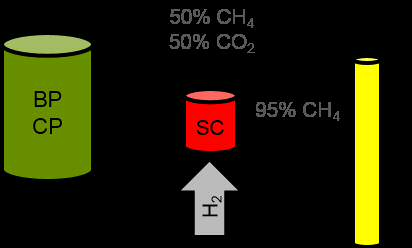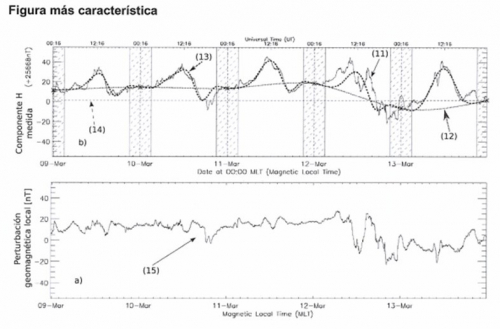CSIC has developed a catalyst for the reaction of methanation of the carbon dioxide of biogas, which shows high levels of conversion per volume of catalyst, allowing the direct reaction, only in one step.
The catalyst has been tested in real biogas, reaching a final gas composition that meets the specifications, for unconventional sources, for being injected into the natural gas grid.
Industrial partners from the energetic industry are being sought to collaborate and use the catalyst through a patent license agreement.
Method for the direct methanation of biogas The methanation reaction (conversion of carbon oxides into methane in the presence of hydrogen) is a well-known reaction, for which multiple catalysts have been developed in the literature. It has several applications, including its growing role in power-to-gas processes.
However, catalysts so far developed for the reaction of methanation of pure CO2 currents are difficult to apply to the upgrade of raw biogas, since high levels of activity and stability are required for the conversion of this gas mixture. The specific characteristic of the catalyst object of the invention is that it keeps a high conversion of CO2 in presence of other components of biogas and that it can be used in intensified reactors (GHSV 20000-25000 h1), where high pressure and high flow rates are used, without loss of catalytic activity.
These characteristics make possible its use for the direct methanation of biogas, avoiding additional steps. Some test into intensified reactors has been carried out with the catalyst reaching a 94% conversion, with 100% methane selectivity, while other commercial catalysts could not exceed 90% conversion, under the same conditions.
An example of upgrading biogas Author : Sabine von Falkenfels https://commons.wikimedia.org/w/index.php?curi d=65594707
Main innovations and advantages
· The catalyst shows an excellent activity in the transformation of carbon dioxide from biogas, allowing a direct methanation, in a single stage.
· It can be used in intensified reactors.
· It can lead to a 95% CO2 conversion in biogas currents, with 100% CH4 selectivity.
· It shows high stability for more than 250 hours.
· It can be applied to other methanation processes, such as the production of methane from renewable hydrogen and · CO2



